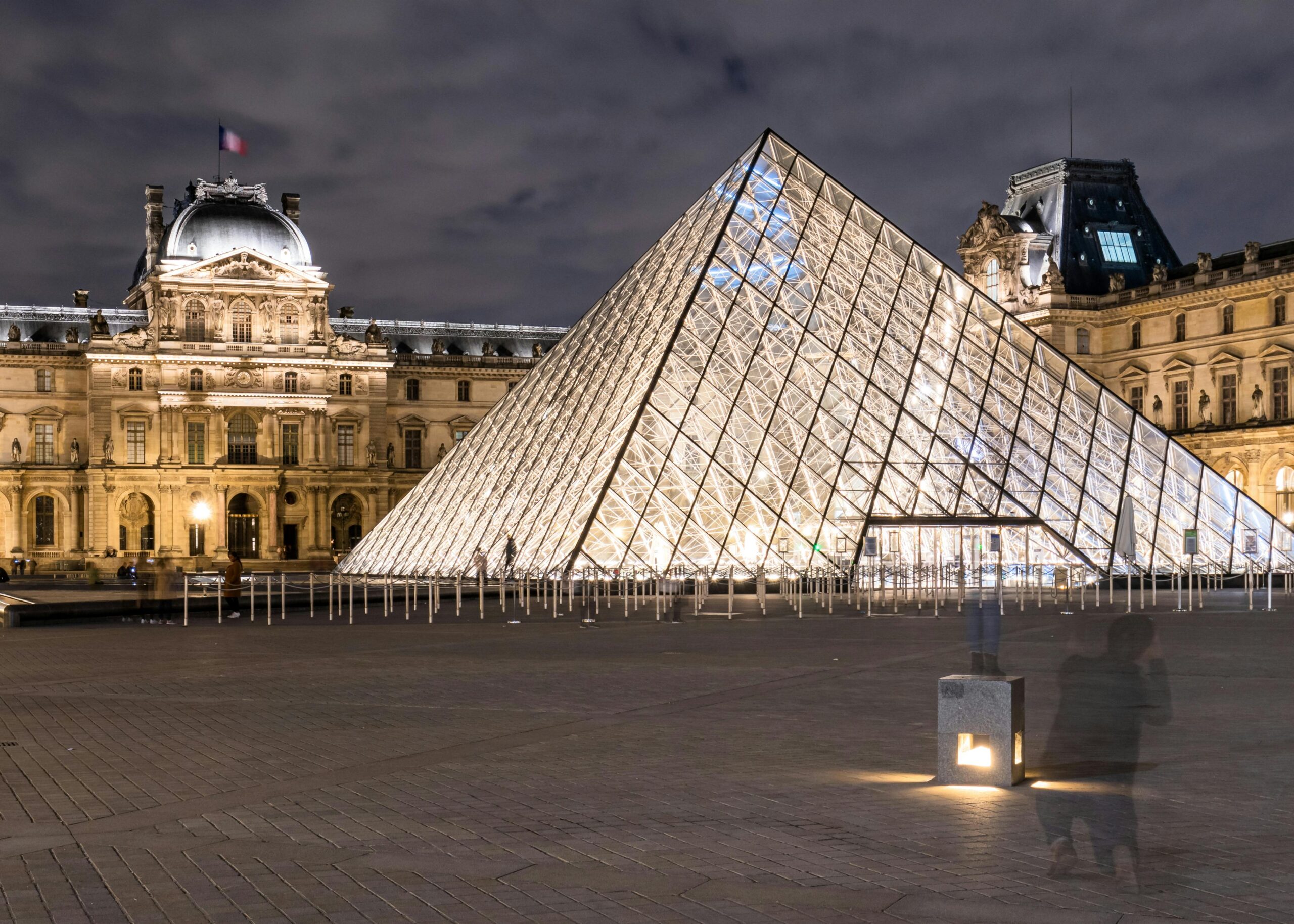
Why is the glass pyramid controversial?
The Glass Pyramid at the Louvre, a striking architectural feature that has become an iconic part of Paris’s cultural and artistic landscape, is as controversial as it is admired. Designed by the Chinese American architect I. M. Pei and completed in 1989, the pyramid serves as the main entrance to the Louvre Museum. However, its construction and symbolism have sparked debates that continue to resonate among architects, art historians, cultural critics, and the general public.
Historical Context of the Louvre and the Pyramid
The Louvre itself is a historic monument with roots dating back to the 12th century, originally serving as a fortress and later transformed into a royal palace before becoming a museum in 1793. It is a repository of art and history, representing France’s cultural heritage. The decision to introduce a modern glass pyramid into this context was inherently provocative.
The pyramid was part of a larger renovation project initiated by then President François Mitterrand. Known as the Grand Louvre Project, it aimed to modernize the museum and accommodate its growing number of visitors. The pyramid was conceived as a solution to logistical challenges, particularly congestion at the museum’s entrance. By placing the entrance underground and using the pyramid to channel light into the space, Pei sought to harmonize functionality with aesthetics.
Despite its practical purpose, the design faced immediate backlash. Critics argued that the stark modernism of the pyramid clashed with the historical architecture of the Louvre. For many, it represented a jarring imposition of contemporary design in a setting revered for its classical and Renaissance elegance.
Symbolism and Cultural Tensions
One of the most polarizing aspects of the glass pyramid is its symbolic weight. Pyramids have historically been associated with ancient Egypt, and their introduction into the context of French culture raised questions about the blending of disparate cultural symbols. While Pei’s design was intended as an homage to the mathematical precision and timeless quality of the pyramid form, some viewed it as an incongruous gesture that undermined the museum’s identity.
The pyramid’s transparency, achieved through its glass panels, was meant to symbolize openness and light. However, this transparency also became a point of contention. Traditionalists argued that it lacked the gravitas befitting the Louvre, while modernists celebrated it as a forward looking emblem of innovation.
Architectural Debate
From an architectural perspective, the pyramid sparked discussions about the role of contemporary design in historical settings. The blending of old and new is a common challenge in architectural projects, and the glass pyramid became a case study for such integration.
Supporters of Pei’s design lauded his ability to juxtapose modernity with history without overshadowing the Louvre’s existing structures. The pyramid’s geometric simplicity and transparency allowed it to complement rather than compete with the ornate facades of the museum. Pei’s mastery of scale ensured that the pyramid, despite its boldness, did not dominate the courtyard.
Critics, however, saw the design as an affront to the integrity of the Louvre’s historic architecture. To them, the pyramid’s modern materials and sharp lines disrupted the visual harmony of the site. The debate encapsulated broader tensions between preservation and progress, a recurring theme in architectural discourse.
Public and Political Reactions
The controversy surrounding the glass pyramid was not limited to architectural circles. The French public, known for its passionate engagement with cultural matters, was deeply divided. Many saw the pyramid as an alien intrusion that betrayed the Louvre’s historical essence. Others embraced it as a bold statement of France’s willingness to innovate and evolve.
Politically, the project became a lightning rod for debates about national identity and the role of the state in cultural affairs. Mitterrand’s unwavering support for the pyramid was both praised as visionary and criticized as authoritarian. Some viewed the project as emblematic of the president’s “grands travaux” (great works) policy, which prioritized monumental and sometimes controversial public projects.
The Pyramid’s Legacy
Over time, the glass pyramid has undergone a reevaluation. Initially maligned by many, it has gradually been embraced as an integral part of the Louvre’s identity. Its success in resolving the logistical challenges of the museum’s entrance has been widely acknowledged. Today, millions of visitors pass through the pyramid annually, and its image is synonymous with the Louvre itself.
The pyramid has also inspired broader discussions about the evolving nature of cultural heritage. It exemplifies the idea that history is not static but a living dialogue between the past and the present. The controversy it sparked highlights the dynamic interplay between preservation and innovation, challenging societies to reconsider what it means to honor tradition while embracing change.
Broader Implications for Architecture and Urban Design
The glass pyramid’s story has implications far beyond the confines of the Louvre. It serves as a case study for architects and urban planners grappling with similar challenges in integrating contemporary design into historic environments. The debate underscores the importance of context, sensitivity, and dialogue in architectural practice.
Moreover, the pyramid’s reception underscores the power of architecture to provoke emotional and intellectual responses. It reminds us that buildings are not just functional structures but also cultural artifacts that embody values, ideologies, and aspirations.
The glass pyramid at the Louvre is an evidence to the complexities of architectural innovation in a historically charged setting. Its controversy stems from its audacious departure from tradition, its symbolic ambiguity, and the cultural tensions it brought to the fore. Yet, it is precisely these qualities that have made it a subject of enduring fascination and debate.
As the pyramid continues to captivate visitors and provoke discussions, it embodies the evolving dialogue between history and modernity, tradition and innovation. It stands as a reminder that the most controversial creations often become the most iconic, shaping our understanding of culture, art, and architecture for generations to come.





